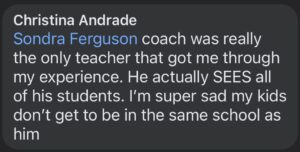Throughout this week, the concept of endings has occupied my thoughts, leading me to ponder the profound role they play in shaping our lives. As the familiar sound of the school bell reverberated through the air, my eyes were fixed on my son, Landon, who, in that very moment, transitioned from a fourth grader to a fifth grader. The previous year had dissipated like dust in the wind as he excitedly dashed towards me, arms wide open for an affectionate embrace.
Happy Retirement
However, my gaze extended beyond the immediate, and I noticed Mrs. Pybus, his teacher, lingering in the distance. In this moment, I realized that for Mrs. Pybus, this marked the culmination of a profound and storied career. Landon had the privilege of being a part of her final class before she chose to embark on the journey of retirement. The conclusion of fourth grade for Landon mirrored the final notes of a symphony composed of Mrs. Pybus’ unwavering dedication to the service of children—a harmonious culmination of a lifelong pursuit.
Endings are complex and multifaceted, evoking a mixture of emotions that ebb and flow within us. They carry with them a sense of uncertainty that shrouds our path forward. Yet, nestled within the depths of this uncertainty lies an extraordinary revelation: as we bid farewell to one chapter, we create fertile ground for new beginnings to take root and flourish.
Time Flies
Although we still have one more year of elementary school left with our youngest child, I am acutely aware of how swiftly this chapter will draw to a close. This realization has been solidified through my experiences with both Jordan and Lauren, my older children. It feels as though it was only yesterday when they embarked upon their tentative first steps into the realm of kindergarten, their innocent eyes brimming with curiosity and wonder. And yet, like a fleeting wind gust, they have matured into remarkable individuals, confidently donning their caps and gowns, clutching their hard-earned college degrees. There was a time when these transitions filled me with melancholy, a sense of loss as familiar chapters reached their final pages. However, as time has passed, I have learned to embrace the inherent opportunities that lie within endings, and I cherish the privilege of being present to witness the dawning of new beginnings alongside my children.
Endings, rather than being definitive conclusions, should be perceived as the threshold to a fresh chapter in the intricate story of our lives. Instead of succumbing to worry or apprehension, I urge you to wholeheartedly embrace each moment and seize the opportunity to embark on this new season with unwavering enthusiasm and resolute determination.


